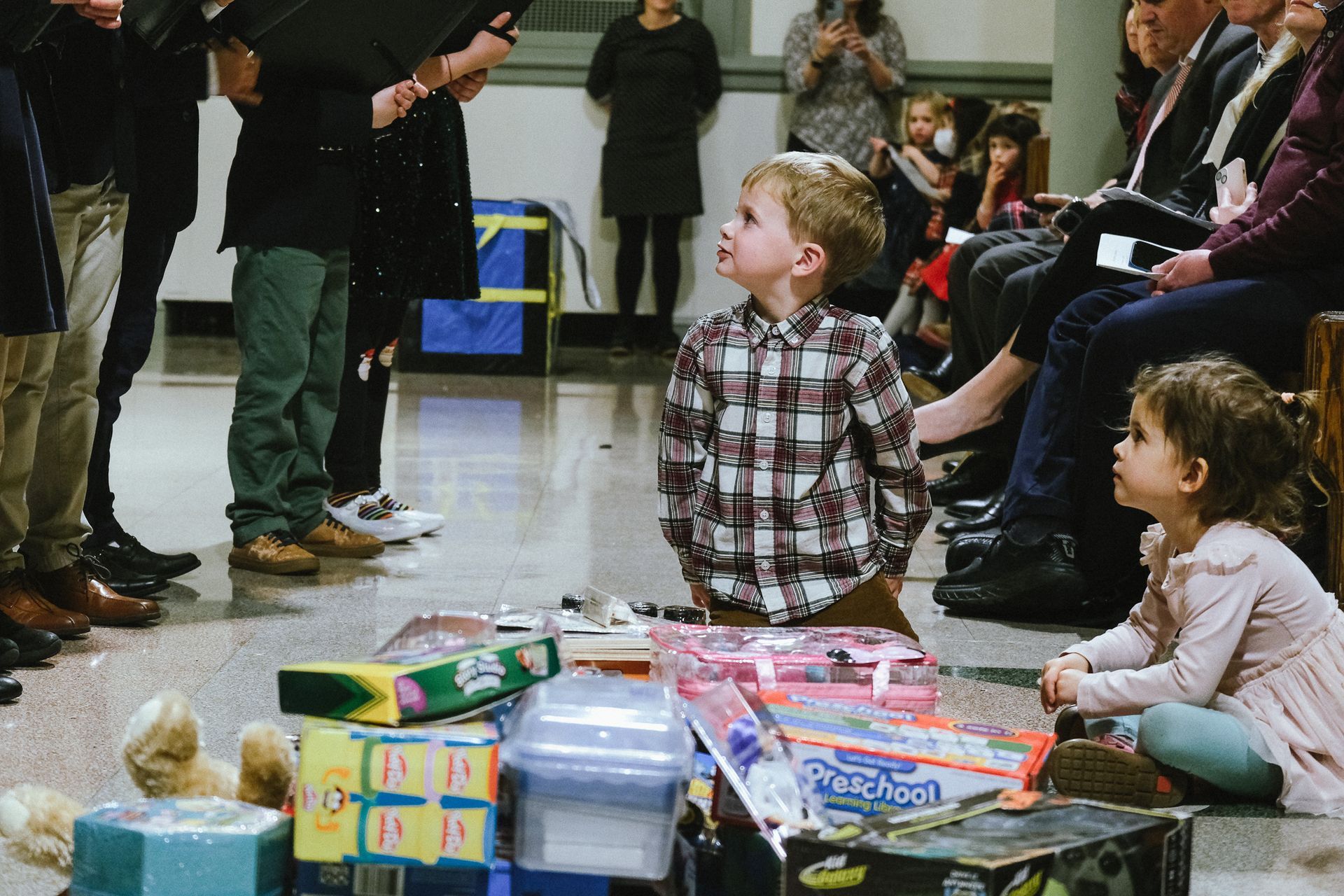St. Peter School Celebrates Advent with Giving

By Elizabeth O'Gorek, Hill Rag
December 22, 2022
St. Peter School (SPS) families gathered on Thursday, Dec.15 to celebrate the holiday season in St. Peter’s Church on Capitol Hill.
Students in Pre-K through Eighth Grade sang a medley of traditional and popular Christmas favorites, with bonus performances by the St. Peter School Choir and the Eighth Grade Christmas Pageant.
At the conclusion of the event, the congregation sang My Grown-Up Christmas List—led by the St. Peter School Choir and accompanied on piano by Music Teacher and Choir Director Paul Griffin—while students presented 172 toys donated by SPS families for Shirley’s Place Day Center at Everyone Home DC.
More than 175 toys were collected for Everyone Home DC’s drop-in shelter, Shirley’s Place.
...
“Everyone Home is incredibly grateful for the St Peter School’s generous support in providing holiday gifts for the families we work closely with,” Akalonu said. “When inflation is squeezing the budget of so many, St. Peter School’s kindness ensures children in our community have something to open on Christmas morning and allows caregivers to focus on other financial obligations.”
But St. Peter School representatives said that gathering together and experiencing the joy of sharing was the true gift. “The advent season is a time when we reflect on the gifts we receive through Christ and how we can manifest that as a community,” St. Peter School Principal Karen Clay said. “Being able to gather, hear the children sing, and experience this joy together has been a great gift.”
...
Full Story Here: https://www.hillrag.com/2022/12/22/st-peter-school-celebrates-advent-with-giving/



St. Peter School, Capitol Hill
422 Third Street SE
Washington, DC 20003
Phone:
(202) 544-1618
Fax: (202) 547-5101

